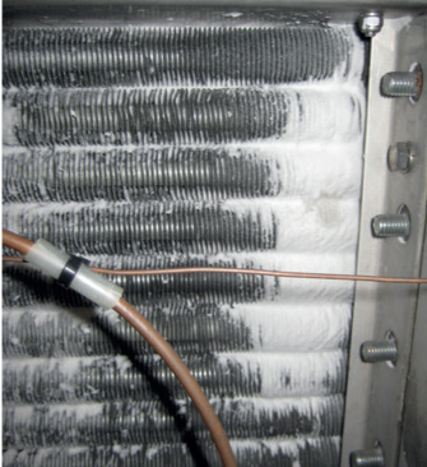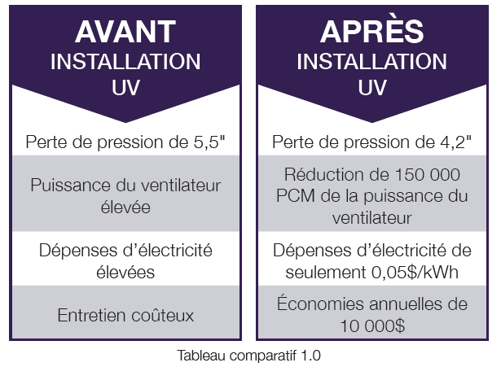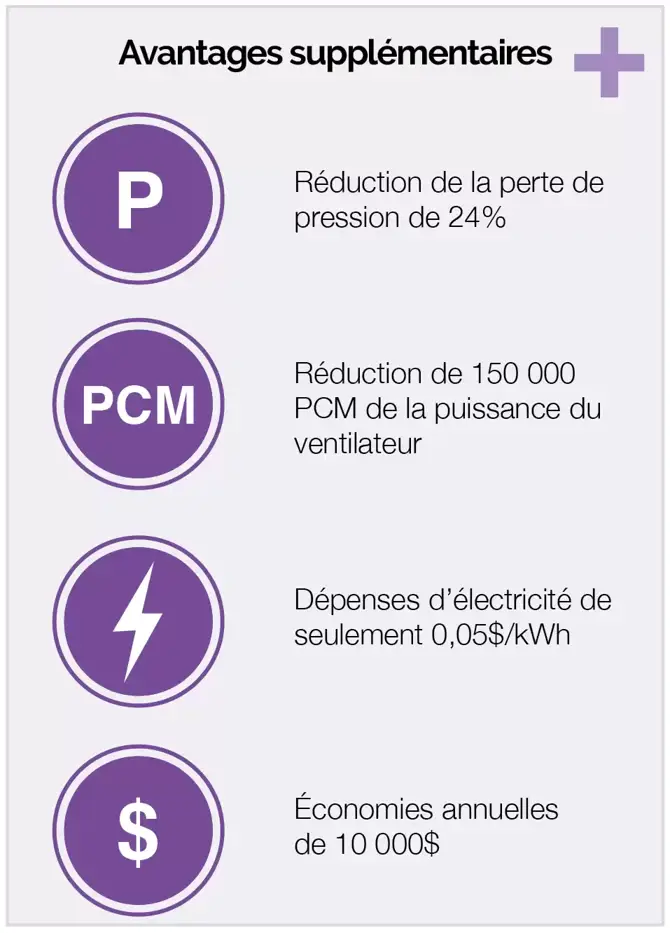During the manufacturing process, a very fine “paper” dust is produced. It passes though the filters of the A/C system, and then biocontaminants develop on the 12-inch deep coils and clog the fins.
During the manufacturing process, a very fine “paper” dust is produced. It passes though the filters of the A/C system, and then biocontaminants develop on the 12-inch deep coils and clog the fins.
There are 3 coils in the air handler. They are all 11” thick and measure 133” x 108” each. The company decided to install UV lights on only one coil as a trial, because they did not want to invest much into something they didn’t believe in. The design pressure drop for the AHU is 2-2.5” wc. Pressure drop across the coil prior to washing was 5.5” wc.
The coils were washed two weeks prior to the installation of Sanuvox IL Coil Cleaners, so the surface debris that are shown in the pictures were removed. Pressure drop across the coil after power washing was unchanged at 5.5” wc.

Because of the thickness of the coil, Sanuvox supplied 4 IL 60” units installed upstream and 8 IL 60’’ units installed downstream. The UV lights were operated for 3 weeks and the coil washed again. 5 days later, pressure drop was 4.2” wc., a drop of 24%.
Sanuvox treated one third of the coil area in this air handler and the company saw an improvement in airflow that couldn’t be achieved with washing all three coils four times a year.
Solely based on the pressure drop reduction from 5.5” to 4.2”, the fan horsepower reduction for a flow of 150,000 CFM at an electrical cost of $ 0.05/kWh results in annual savings of $ 10,000.
From previous experience, the savings in heat transfer energy is usually far greater than the pressure drop energy savings. At this moment, we do not have enough information on the operation of the coils to make valid estimates.

